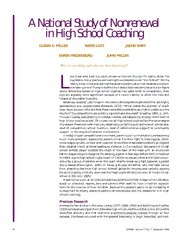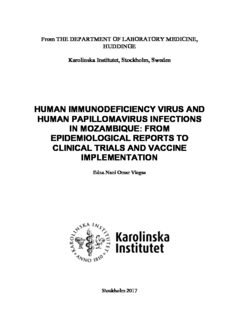
human immunodeficiency virus and human papillomavirus infections in mozambique PDF
Preview human immunodeficiency virus and human papillomavirus infections in mozambique
From THE DEPARTMENT OF LABORATORY MEDICINE, HUDDINGE Karolinska Institutet, Stockholm, Sweden HUMAN IMMUNODEFICIENCY VIRUS AND HUMAN PAPILLOMAVIRUS INFECTIONS IN MOZAMBIQUE: FROM EPIDEMIOLOGICAL REPORTS TO CLINICAL TRIALS AND VACCINE IMPLEMENTATION Edna Nani Omar Viegas Stockholm 2017 All previously published papers were reproduced with permission from the publisher. Published by Karolinska Institutet. Printed by AJ E-print AB © Edna Nani Omar Viegas, 2017 ISBN 978-91-7676-795-5 Human Immunodeficiency Virus and Human Papillomavirus Infections in Mozambique: from Epidemiological Reports to Clinical Trials and Vaccine Implementation THESIS FOR DOCTORAL DEGREE (Ph.D.) By Edna Omar Viegas Principal Supervisor: Opponent: Associate Professor Charlotta Nilsson P r o f e ssor Anna-Lise Williamson Karolinska Institutet University of Cape Town Department of Laboratory Medicine I n s t i t ute of Infectious Diseases and Molecular Medicine Co-supervisors: Faculty of Health Sciences Dr. Ilesh V. Jani Instituto Nacional de Saúde Examination Board: Professor Patrik Medstrand Professor Sören Andersson Lund university Örebro University Department of Clinical Virology School of Medical Sciences Department of Laboratory Medicine Associate Professor Carl Johan Treutiger Karolinska Institutet Professor Eric Sandström Center for Infectious Medicine Karolinska Institutet Department of Education and Clinical Research Professor Sonia Andersson Karolinska Institutet Department of Women's and Children's Health To my family, the pillars of my life. ABSTRACT Human immunodeficiency virus (HIV) and human papillomavirus (HPV) are sexually transmitted microorganisms responsible for two major infectious diseases and public health concerns, particularly in developing countries and in sub-Saharan Africa. HIV is the causative agent of the acquired immunodeficiency syndrome (AIDS) that has so far claimed more than 35 million lives. HPV is responsible for virtually all cervical cancers (CC), the seventh most common cancer in the world and the fourth in women. Mozambique is highly affected by both HIV and HPV epidemics. The country has the fifth highest prevalence of HIV in the world and the second highest rates of CC in Africa. The national seroprevalence of HIV in 2015 was estimated to be 13.2% in populations aged 15-49 years. A previous report from Southern Mozambique has demonstrated a high prevalence of HPV in women aged 14-61 years (75.9%). This thesis aimed at describing the epidemiology of HIV and HPV infections in young adults in Maputo city, Mozambique and to evaluate preventive strategies for control of HIV and HPV. This thesis embraces a total of four studies (I-IV). Study I aimed at determining the HIV incidence in youths aged 18-24 years. In this study 1380 subjects were screened for HIV, hepatitis B virus and syphilis. HIV-uninfected individuals (n=1309) were prospectively followed for one year with quarterly study visits to determine the HIV status. The HIV, hepatitis B and syphilis prevalence found at baseline were 5.1%, 12.2% and 0.36%, respectively. The overall HIV incidence was 1.14/100 PY and was slightly higher in the female population (1.49/100 WY). The relatively low prevalence and incidence of HIV and the low prevalence of syphilis described in this study associated to the considerable stable visit retention rates, suggest that this cohort is suitable for recruitment into phase I/II HIV vaccine trials. Study II was a phase I HIV vaccine trial that recruited 24 healthy HIV-uninfected individuals from the cohort established in study I and aimed at exploring the safety and immunogenicity of an HIV-DNA/HIV-MVA prime-boost strategy using a low-dose (600 µg, 2 x 0.1 mL) and a high-dose (1200 µg, 2 x 0.2 mL) of HIV-DNA prime, delivered intradermally using a needle-free device, the ZetajetTM. This was the first HIV vaccine trial ever conducted in Mozambique and the first to assess the use of the ZetajetTM in a higher injection volume. The vaccines were safe and well tolerated. After the first HIV-MVA, Env responses were significantly higher in the high-dose group compared to the low-dose group (median 420 vs. 157.5 SFC/million PBMC, p = 0.014). Four weeks after the 2nd HIV-MVA, binding antibodies to recombinant CN54 subtype C gp140 and to native subtype B gp160 were induced in all vaccinees, with a median titer of 800 and 400, respectively. The findings suggest that the higher 1200 µg HIV-DNA dose should be considered in the future. Study III describes HPV genotypes in young women and men recruited from the cohort established in study I. Cervical and urethral samples were collected in women and men, respectively and analyzed using the Clart® Human Papillomavirus 2 (Genomica, Madrid, Spain), a target amplification assay capable of detecting 35 different low- and high-risk HPV genotypes. The overall prevalence of HPV was 40.8% (63.6% and 10.2% in women and men, respectively). In women HPV52, 35, 16, 53, 58, 6, and 51 were the most frequently found genotypes and HPV6, 11, 52, 59, and 70 in men. These results show a 50% homology with the genotypes detected in CC specimens in the country. Study IV was a two-round post-vaccination survey conducted after an HPV vaccine demonstration project (in 2014 and 2015), in which an HPV vaccine was given to girls aged 9-10 years, in two rural districts of Mozambique (Manica and Mocímboa da Praia). This study aimed at assessing the HPV vaccine coverage, awareness, knowledge, and acceptance; to explore reasons for not-vaccinating; and to identify the best vaccine communication strategies. Parents or guardians of girls eligible for vaccination were interviewed within 4 months after the last HPV injection had been administered to the girls. Vaccine coverage in 2014 was 50% and 14% and in 2015 was 47% and 32% for Manica and Mocímboa da Praia, respectively. The most frequent reason to vaccinate the girls was the belief that the vaccine could contribute to the girl´s health. The reasons for not vaccinating were the absence of girls from school and the lack of knowledge about the campaign. The radio spot was the communication strategy that reached the majority of respondents. These results show that provision of information about the benefits of vaccines can lead to a positive decision by the parents/guardians and improved planning and communications may increase the vaccination rates. Lessons learned from this study may give important insights on the implementation of a future HIV vaccine in adolescents, a group that will most likely be prioritized. LIST OF SCIENTIFIC PAPERS I. Viegas EO*, Tembe N*, Macovela E, Gonçalves E, Augusto O, Ismael I. N, Sitoe N, De Schacht C, Bhatt N, Meggi B, Araujo C, Sandström E, Biberfeld G, Nilsson C, Andersson S, Jani I, Osman N. Incidence of HIV and the prevalence of HIV, hepatitis B and syphilis among youths in Maputo, Mozambique: a cohort study. PLoS One;10(3): e0121452. II. II. Viegas EO*, Tembe N*, Nilsson C, Meggi B, Maueia C, Augusto O, Stout R, Scarlatti G, Ferrari G, Earl PL, Wahren B, Andersson S Robb ML, Osman , N, Biberfeld G, Jani I, Sandström E and the TaMoVac study group. Intradermal HIV-1 DNA immunization using needle-free ZetajetTM injection followed by HIV-modified vaccinia virus Ankara vaccination is safe and highly immunogenic in Mozambican young adults: a phase I randomized controlled trial. Manuscript submitted. III. Viegas EO, Augusto O, Ismael N, Kaliff M, Lillsunde-Larsson G, Ramqvist T, Nilsson C, Falk K, Osman N, Jani IV, Andersson S. Human papillomavirus prevalence and genotype distribution among young women and men in Maputo city, Mozambique. BMJ Open 2017;0:e015653. doi:10.1136/ bmjopen-2016-015653. IV. Viegas EO*, Ramgi P*, Maiane J, Mahomed M, Guimarães A, Matsinhe G, Andersson S, Jani I, De Schacht C. Human papillomavirus vaccine coverage, awareness, knowledge and acceptance: a post-vaccination survey among parents and guardians of girls eligible for vaccination in the districts of Manica and Mocímboa da Praia, Mozambique. Manuscript. *Authors contributed equally to the work III. IV. CONTENTS 1 INTRODUCTION ......................................................................................................... 1 1.1 HIV/AIDS ............................................................................................................ 1 1.1.1 The origin of HIV ..................................................................................... 1 1.1.2 Taxonomy, viral structure and replication ............................................... 3 1.1.3 Classification ............................................................................................ 5 1.1.4 Transmission, pathogenesis and clinical presentation ............................. 6 1.1.5 The global HIV epidemic ....................................................................... 11 1.1.6 HIV epidemic in Mozambique .............................................................. 13 1.1.7 Diagnosis ................................................................................................ 15 1.1.8 Prevention ............................................................................................... 17 1.1.9 HIV vaccines .......................................................................................... 19 1.2 Human papilomavirus (HPV) and cervical cancer ............................................ 25 1.2.1 The history of HPV and its association with genital warts and cervical cancer ........................................................................................ 25 1.2.2 Taxonomy, viral structure and genome ................................................. 26 1.2.3 Classification .......................................................................................... 27 1.2.4 The HPV life cycle ................................................................................. 28 1.2.5 The mechanisms of immune evasion ..................................................... 30 1.2.6 Natural history of genital HPV and HPV epidemiology ....................... 30 1.2.7 Detection of HPV infection ................................................................... 36 1.2.8 Guidelines for HPV testing and cervical cancer screening ................... 39 1.2.9 Prevention of HPV infection .................................................................. 42 2 RATIONALE ............................................................................................................... 45 3 OBJECTIVES .............................................................................................................. 47 3.1 General objective ................................................................................................ 47 3.2 Specific objectives .............................................................................................. 47 4 MATERIALS AND METHODS ................................................................................ 48 4.1 Studies related to the epidemiology of HIV and HPV infections in young populations: Studies I (Paper I) and III (Paper III) ............................................ 49 4.1.1 Participants and procedures ................................................................... 49 4.1.2 Tests and laboratory procedures ............................................................ 50 4.1.3 Statistical analysis .................................................................................. 51 4.1.4 Ethical considerations ............................................................................ 52 4.2 Studies related to the evaluation of prevention strategies for HIV and HPV infections: Studies II (Paper II) and IV (Paper IV) .................................. 52 4.2.1 Study II: HIV vaccine clinical trial ........................................................ 52 4.2.2 Study IV: HPV post-vaccination survey ............................................... 56 5 RESULTS AND DISCUSSION .................................................................................. 59 5.1 Study I: Prevalence of HIV, HBV and syphilis and incidence of HIV in youths .................................................................................................................. 59 5.1.1 Demographic and sexual behavior characteristics ................................ 59 5.1.2 HIV prevalence, associated factors and co-infections with HBV and syphilis ............................................................................................. 59 5.1.3 HIV incidence, associated factors and retention rates ........................... 60 5.2 Study II: HIV vaccine clinical trial .................................................................... 62 5.2.1 Screening, enrolment and retention of subjects ..................................... 62 5.2.2 Demographics and baseline characteristics ........................................... 62 5.2.3 Safety outcomes: solicited and unsolicited adverse events reported .... 63 5.2.4 Immunogenicity outcomes: comparison between the low-dose (600 µg) and high-dose (1200 µg) groups ............................................. 63 5.3 Study III: Prevalence of HPV infections and genotype distribution ................. 65 5.3.1 Demographic and sexual behavior characteristics ................................ 65 5.3.2 HPV prevalence and associated factors ................................................. 66 5.3.3 HPV genotyping ..................................................................................... 67 5.3.4 Vaccine-matched HPV genotypes ......................................................... 68 5.4 Study IV: HPV post-vaccination survey ............................................................ 69 5.4.1 Demographic characteristics .................................................................. 69 5.4.2 Vaccination coverage ............................................................................. 70 5.4.3 Communication strategies ...................................................................... 70 5.4.4 Knowledge and perceptions about HPV vaccine and cervical cancer ...................................................................................................... 71 5.4.5 HPV vaccine acceptability ..................................................................... 72 5.4.6 HPV vaccine unacceptability ................................................................. 72 5.4.7 Factors associated with complete vaccination schedule ........................ 73 6 FINAL REMARKS AND CONSIDERATIONS ....................................................... 74 7 ACKNOWLEDGEMENTS ......................................................................................... 76 8 REFERENCES ............................................................................................................. 79 LIST OF ABBREVIATIONS Ad Adenovirus ADCC Antibody-dependent cellular cytotoxicity AHI Acute HIV infection AIDS Acquired immunodeficiency syndrome ART Antiretroviral treatment ASCUS Atypical squamous cells of undetermined significance bNAbs Broadly neutralizing antibodies CC Cervical cancer CFTR Cystic fibrosis transmembrane conductance regulator CIN Cervical intraepithelial neoplasia CSW Commercial sex worker DNA Deoxyribonucleic acid DVI Direct visual inspection EC Elite controler EIA Enzyme immunoassay EMA European Medicines Agency EPI Expanded Program on Immunization EU Exposed uninfected FDA Food and Drug Administration HBsAg Hepatitis B surface antigen HBV Hepatitis B virus HC2 Hybrid capture HPV DNA test 2 HIV Human immunodeficiency virus HPV Human papillomavirus HR-HPV High-risk HPV HTLV Human T-lymphotropic virus type IARC International Agency for Research on Cancer ID Intradermally IFN Interferon IL Interleukin Inquérito de Indicadores de Imunização, Malária e HIV/SIDA em IMASIDA Moçambique IN Integrase enzyme LAV Lymphadenopathy-associated virus LCR Long control region LR-HPV Low-risk HPV LTNP Long-term non-progressor MOH Ministry of Health MSM Men who have sex with men MVA Modified vaccinia Ankara virus NAAT Nucleic acid amplification tests NAbs Neutralizing antibodies NYVAC New York vaccinia virus OC Oral contraception
Description:The list of books you might like

Corrupt (Devil's Night #1)

The Spanish Love Deception

As Good as Dead

What Happened to You?

FREE E-Book The Unseen Therapist

COMESA 261: Textiles - Natural fibres - Generic names and definitions
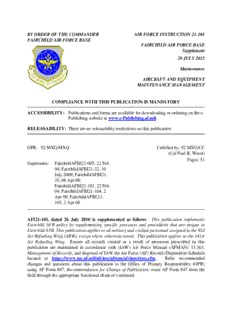
BY ORDER OF THE COMMANDER FAIRCHILD AIR FORCE BASE AIR FORCE INSTRUCTION 21 ...

Die Acht vom großen Fluß II. Die unheimliche Vogelinsel. ( Ab 10 J.)

COMESA 225-7: Polyvinyl chloride insulated cables of rated voltages up to and including 450/750 V - Part 7: Flexible cables screened and unscreened with two or more conductors

DTIC ADA275521: CBSD: The Celestial Background Scene Descriptor
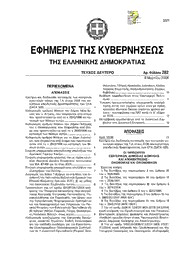
Greek Government Gazette: Part 2, 2006 no. 282
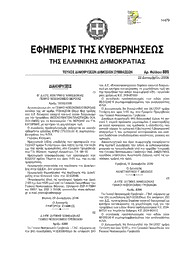
Greek Government Gazette: Part 7, 2006 no. 889
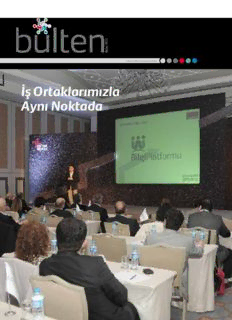
Bülten Sayı
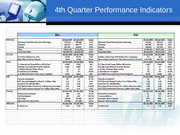
Performance Indicators - 4th Quarter 2006

MS-DOS for Beginners

C. Indice de autores

Opportunities in fashion careers

Quarterly Journal of Speech 2006: Vol 92 Index
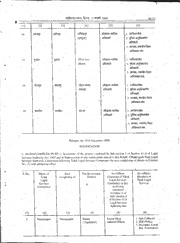
Chhattisgarh Gazette, 2006-01-17, EO Gazette 17, Notice न./844/1206/Sl.SA/Pl/05.-

Gardening Shortcuts
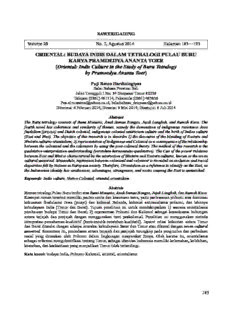
BUDAYA INDIS DALAM TETRALOGI PULAU BURU KARYA PRAMOEDYA ANANTA TOER ...

